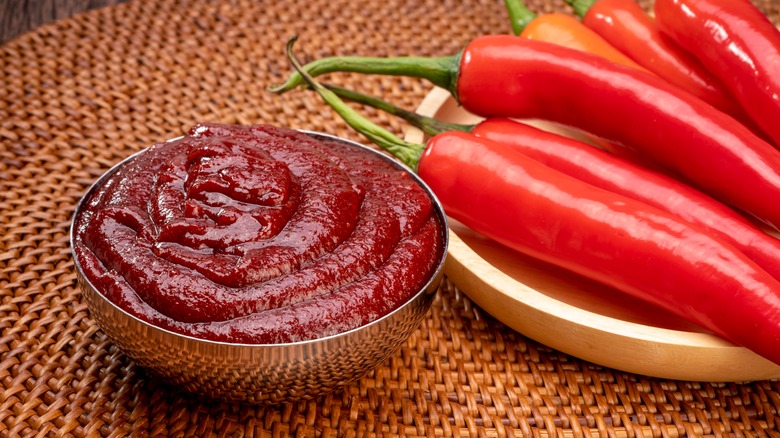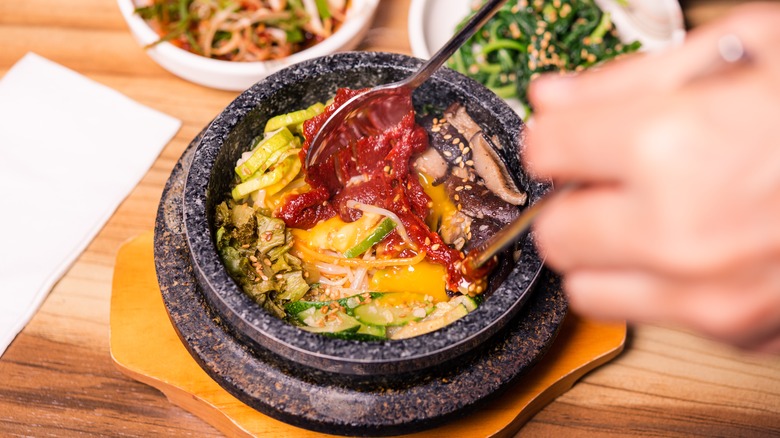The Reason Gochujang Is Often Diluted
Walk through a Korean grocery store and you'll find a whole aisle practically dedicated to gochujang —a quintessential ingredient in Korean cooking. Found in deep red packaging, just like the paste itself, gochujang is used as a marinade, condiment, and ingredient in many popular Korean recipes and fusion dishes.
Gochujang is made from red chili powder, sticky rice, fermented soybean powder, malt barley powder and salt, according to Taste of Home. Korean Bapsang describes gochujang as a thick paste with a spicy, yet slightly sweet flavor, that also tastes of pepper and salt.
Every restaurant and home in Korea keeps gochujang at the ready to be incorporated into meals. Some of the most popular dishes to include gochujang are bibimbap (a rice bowl with vegetables and protein like tofu or beef), soondubu jjigae (soft tofu stew), and tteokbokki (stir-fried rice cakes with gochujang sauce), per KPOP Foods.
While there is a base recipe for gochujang, which has been part of the Korean household for centuries, each person likes theirs to have a slightly different taste, according to Side Chef. So, if you decide to make gochujang from scratch, go ahead and play with the heat level and taste.
Tempering the heat
Gochujang is recommended by Taste of Home for people looking to add some heat to their food, but they also caution that because the Korean paste has such a concentrated flavor that it is often mixed with liquid to dilute the spiciness.
When Daniel and Katie of Future Dish make bibimbap, they create a gochujang sauce by taking the gochujang paste and adding soy sauce, sugar and vinegar to it to create a sauce that is spicy and sweet, as well as a little tangy. The couple's goal is to teach the world about Korean cooking and include gochujang in many of their recipes. According to Side Chef, gochujang paste and gochujang sauce are not the same thing, explaining that gochujang becomes a sauce when vinegar, soy sauce, sesame oil, a sweetener, and other ingredients are added to it. Some other suggested additions to the sauce are garlic, ginger, and fish sauce.
Nowadays, authentic gochujang paste is more commonly available at mainstream grocery stores, but so is gochujang sauce made for the American consumer. One brand available on Amazon, says it works well with bibimbap, stir fry, burgers, tacos, barbeque sauce, and hot dogs. Go ahead and have fun with gochujang and stir it into your rice bowl or turn it into a sauce and drizzle it on your hamburger. This versatile ingredient can add a touch of Korea to all of your food.

